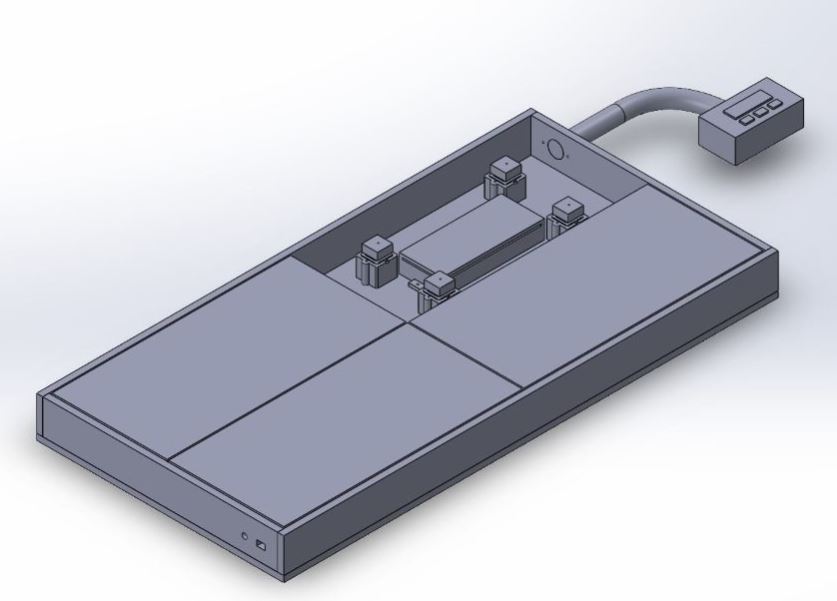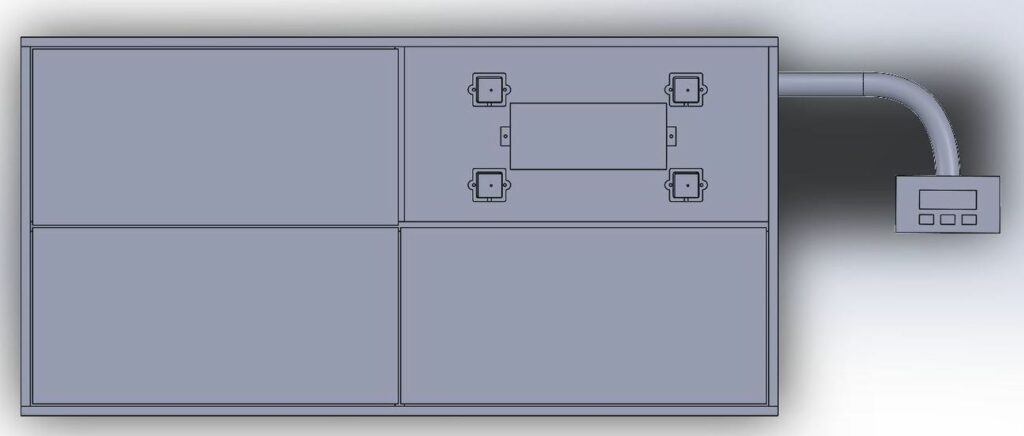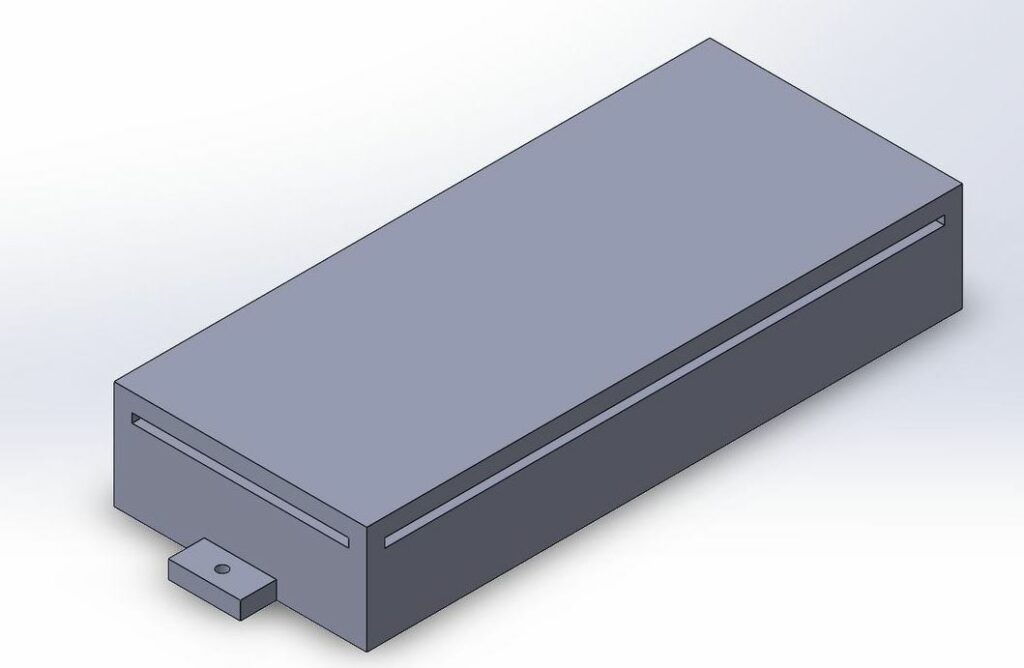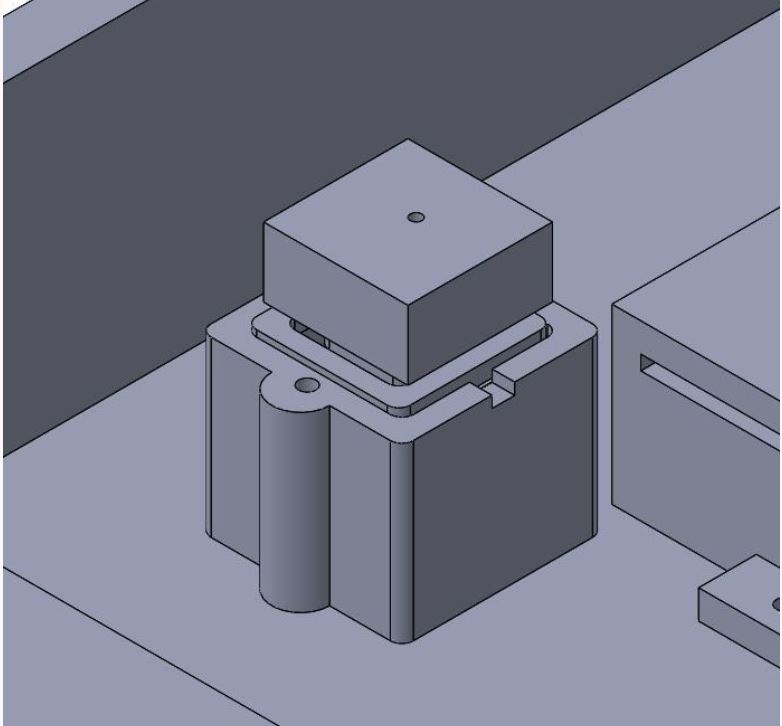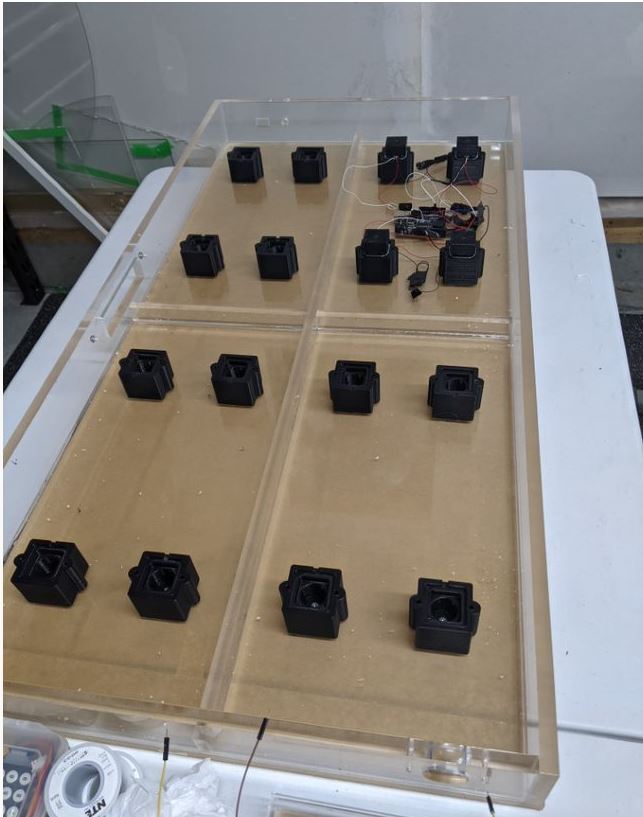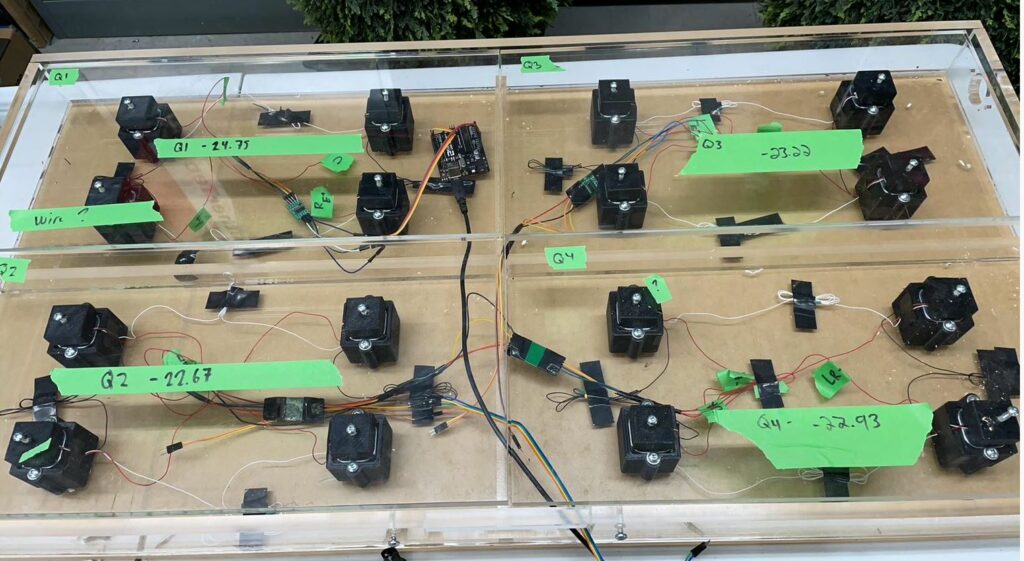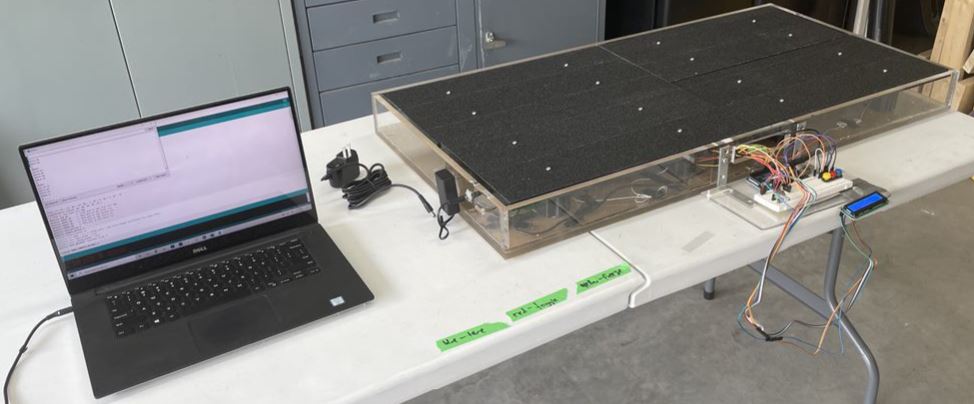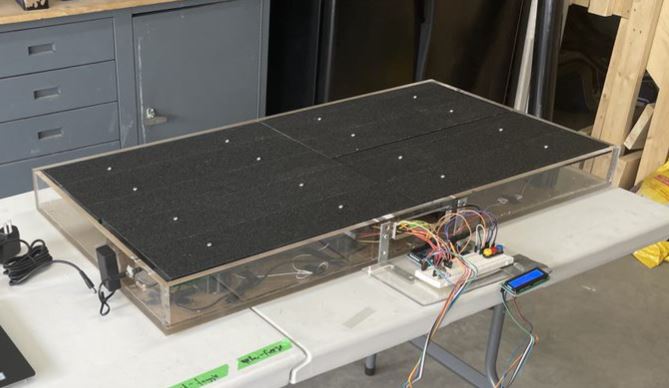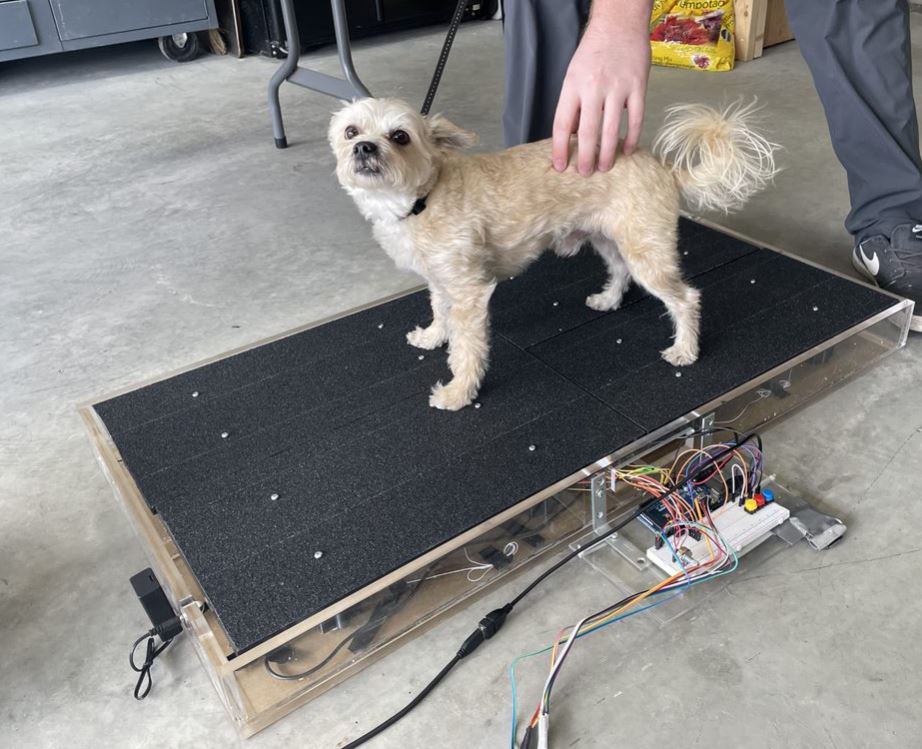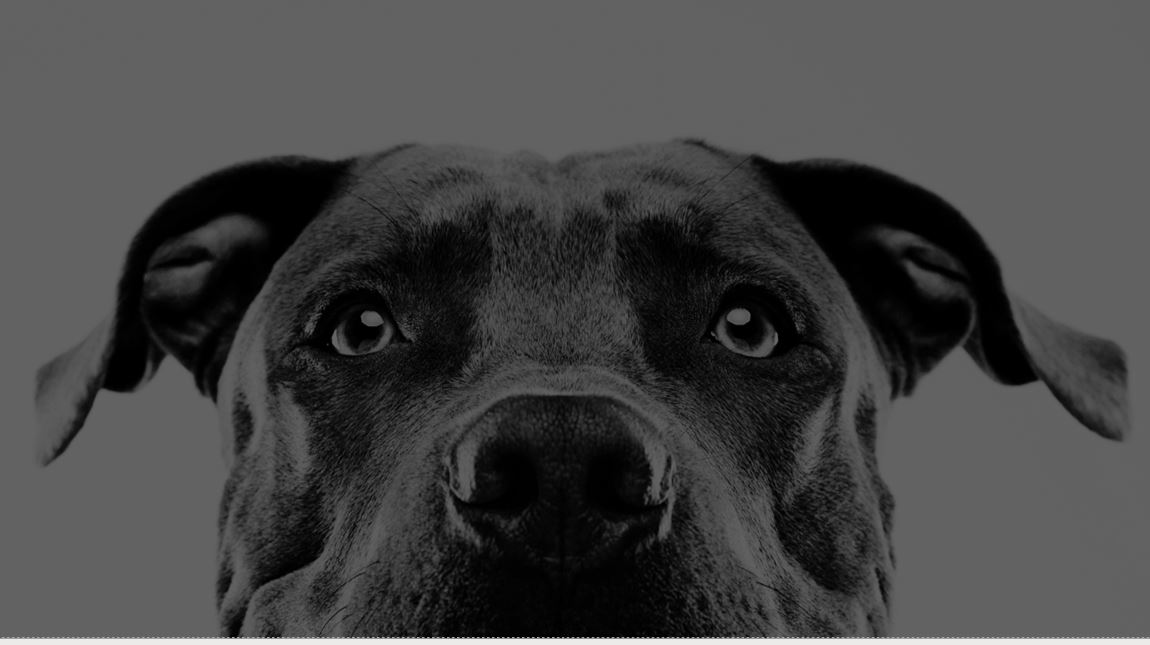Project Category: Multidisciplinary
Join Our Q&A Session
CLICK THE DOG TO VIEW OUR INTRODUCTION VIDEO
About Our Project
It has been our goal to create an affordable open source product that can be produced for all veterinarians across Canada, and potentially developing nations as well. Our product will be able to identify lameness and joint issues in canines to allow for easier assessment and quicker diagnosis of underlying issues. As our furry friends are unable to communicate with us it has been our goal to design a simplistic device that will identify the problematic leg(s), allowing veterinarians to make a diagnosis and implement treatment in a more efficient manner. When the dog is placed on the scale, the weight from each paw is distributed to the sensors in each quadrant. This will provide a percentage/weight for each paw thus pointing to the problematic leg if one is present.
The cost: $1365 + GST.
Meet Our Team
Benjamin Omara (Top Left)
Joseph Oliverio (Top Middle)
Jason Seungjae Lee (Top Right)
Jason Rausch (Bottom Left)
Moaheb Ankur (Bottom Middle)
James Stuckey (Bottom Right)

Details About Our Design
HOW OUR DESIGN ADDRESSES PRACTICAL ISSUES
Canines develop joint problems, strains, and muscle tears from injuries, daily activities, as well as in old age. Some injuries are more serious than others and are frequently identified with a limp. However, minor injuries are often hidden and go unnoticed as canines compensate by distributing additional weight to the other three paws. As a result, this can lead to irregularities in their gait (stride) and can contribute to muscle overuse which leads to issues in the non-problematic legs. When veterinarians are analyzing a dog, they cannot communicate with them, and instead gain most of their information through touching and probing the animal. This approach can be both time-consuming and ineffective. With our technology, our device will be able to identify the problematic leg by identifying irregularities in the weight distributed between all four paws. This will speed up the process and allow veterinarians to examine and run further tests on the appropriate leg.
WHAT MAKES OUR DESIGN INNOVATIVE
Our design is multipurpose, having the capacity to serve as a weight scale and a diagnostic tool. Its simplistic design allows for ease of use in either a veterinary office, or remotely by switching out the power source. Our two primary goals were ensuring we could produce a compact functioning prototype that is affordable for all. Of the competing products we researched at the beginning of the project the cheapest one we could find is $12,000 USD and required a similar footprint to our design. The other product we found was more of a research tool that was able to analyze the stride of a dog; but it required a larger footprint, and the price tag is $45,000 USD. In stark contrast, our product’s price point ensures that it is affordable to a larger consumer base. As an open-source project, this allows for others to replicate or alter the product and fit it to their needs.
WHAT MAKES OUR DESIGN SOLUTION EFFECTIVE
Throughout this process we have been gathering feedback and suggestions from veterinarians in Calgary, allowing us to alter the design to fit their recommendations. A multitude of ideas were explored to address the variations in stances between different dog breeds and sizes. Our finalized design is compact, affordable, and the results can be conveniently read from either the digital display attached to the device or from a connected laptop. The veterinarian will be focused on ensuring the dog is standing properly on all four quadrants, calming the dog, and ensuring that the dog is moving as little as possible. We wanted to ensure that the data was easily readable, easy to capture, and precise with minimal user intervention. Users will be able to zero the scale to ensure accurate results, toggle between weight and percentages for each quadrant, and freeze the data for easier reading and recording of results. Identification of a leg that has a reduced amount of weight being applied to it will be apparent immediately; thus, allowing the vet to move on to more traditional methods of diagnoses. In addition, the scale’s capacity to measure total weight aids the veterinarian in other dimensions of a canine’s physical examination.
HOW WE VALIDATED OUR DESIGN SOLUTION
Our project was validated under the following four acceptance criteria:
Cost: We set out to produce a design that is less than $3000 CAD; we chose this price point to bridge the gap between smaller clinics and the current market options that cost a minimum of $12,000 USD. The current prototype cost $1365 CAD to build; and with our designed display case and Arduino water protection case implemented we expect our total to be around $1500 CAD.
Accuracy: Secondly, we set out to design a product which will produce results within 10% of the expected proportionality weight on each quadrant; for a range of dogs from 10-50 kg. If one quadrant has 30% of the weight applied, then we allow a tolerance of +/- 3% in the proportionality reading from the device. After testing 9 locations on each quadrant; we determined that our device satisfies the accuracy acceptance criteria.
Size: The size of the device was important to our design solution to minimize the footprint/space that it takes in a veterinarian’s office, while still allowing for all dogs up to 50kg to fit on the device. Keeping the design small enough to be portable in the back of a pick-up truck was important to allow for remote use if a veterinarian sees fit. After measuring the gate of a dog at the maximum size; we determined our device would need to be >0.9m in length and >0.4m in width. The prototype is currently 40” x 20” (which is approximately 1.0 x 0.5m)
Calibration: Tedious calibrations might deter use of our teams designed product on a broader scale. Our goal was to not require pre-determined information, such as the dog’s weight, prior to device use; and to minimize user calibrations. The device comes pre-loaded with calibration values taken from the individual quadrants; and has a zero-function implemented to reset the device between animals.
We also completed a load test on our design to ensure each quadrant; the sensor mounts, sensors, and acrylic top plate would be able to handle 250% of the max weight our device was designed for (roughly 31 kg or 70 pounds). Each quadrant can measure below our accepted weight range quite accurately, with small variations depending on location; when applying 1kg to each quadrant, they produce measurements within a tolerance of +/- 10g. We completed a simple battery analysis, which looked at both disposable and rechargeable batteries and ranked them based on battery life, cost/hour of charge, and total life hours to determine a suitable way to power our device in the field. We also came up with design solutions that protected our electronics from moisture, whether that is cleaning products, dogs urine, or spilled water.
FEASIBILITY OF OUR DESIGN SOLUTION
The main goal of our design was to provide a device that would be more accessible to small veterinarian clinics than the available market options. The devices available on the market come at a steep price point, which is outside the price range of most individually owned clinics. Although, our first iteration took longer than expected to build as we had to learn new skills as we went; we believe the device can be manufactured easily and in a timely manner with proper conditions. The materials are easily accessible and can be sourced from multiple vendors. Our design is cost effective, structurally sound, accurate, and has been moisture proofed.
Partners and Mentors
We want to thank the many people who helped us with this project. Our sponsor Dr. John EA Bertman who specializes in Cell Biology and Anatomy of Veterinary Medicine with multiple published papers on the matter, Professor Nigel Shrive who specializes in Biomechanics – cell, tissue, joint and cardiovascular mechanics. Both have helped to guide us through the process with patience and great advice.
Our Photo Gallery
